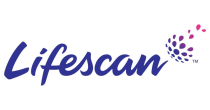LifeScan


high productivity
less time spent on bug fixes
Highlights
LifeScan’s web team wanted a way for end users to make updates that did not impact code.
As part of the company’s divestiture, LifeScan.com needed to be built quickly, and digital assets needed to be moved out of the old parent company servers.
Drupal CMS, Acquia Cloud Platform, Acquia Site Studio
The site went live on time, despite numerous adjustments and changes. Compared to sites not built on a low-code platform, LifeScan saw 17% higher productivity and 80% less time spent on bug fixes.
The Client
A world leader in blood glucose monitoring, LifeScan manufactures and markets the OneTouch Ultra and OneTouch Verio families of products for home use.
The Situation
In the wake of divesting from Johnson & Johnson, LifeScan.com needed its site to be designed so that its corporate communications team could seamlessly share news around crucial company milestones. With press releases and other important announcements about the company's new initiatives needing to be posted promptly, the web team wanted a way for end users to make updates that did not impact code.
The Challenge
Due to the divestiture in progress, LifeScan.com needed to be built quickly, and digital assets needed to be moved out of the old parent company servers. With multiple teams working together toward a common goal, it was imperative to find a way to seamlessly reach each milestone, despite redesigns and other changes.
The Solution
Working with digital partner CI&T, the teams opted for a low-code architecture to support the rapid creation of Drupal sites from scratch. The developers created the site using Acquia Site Studio, allowing designers and site builders to rapidly reuse components to create and modify sites and pages without touching any code.
The Style Guide Manager tool allowed the team to preview changes in real time when updating site content. Also, the low-code architecture let the team implement the often-required design changes without impacting other areas of the website since no code changes were required to address the content and layout adjustment. This drastically reduced the need for rework and bug fixes.
The Results
The site — the first Acquia Site Studio site in the world to go live — was pushed live on time, despite numerous adjustments and changes. Productivity was 17% higher than sites developed in the regular CMS architecture. The team also spent 80% less effort on bug fixing compared to sites built not using a low-code platform.